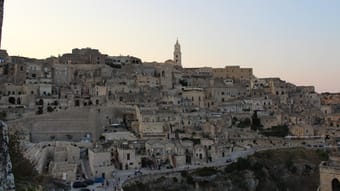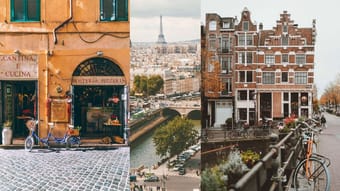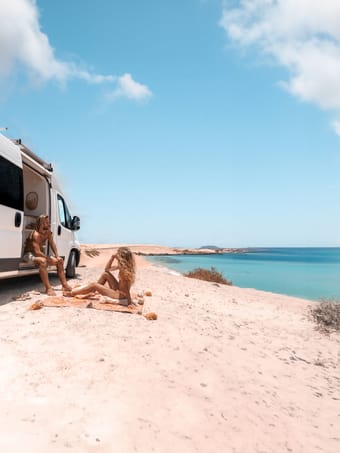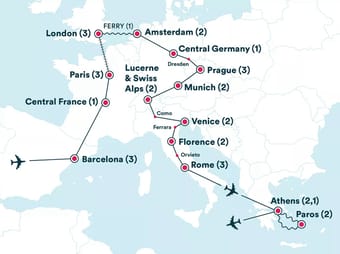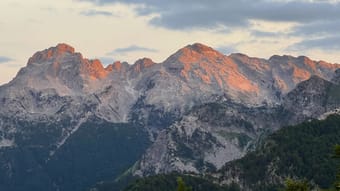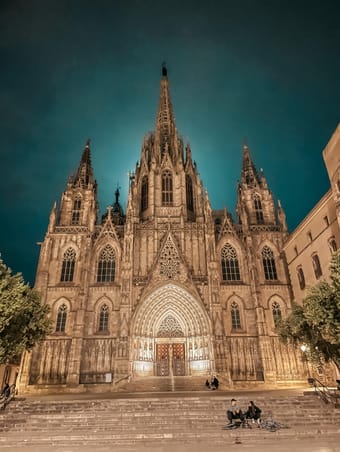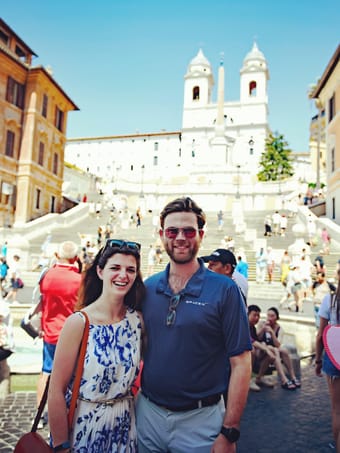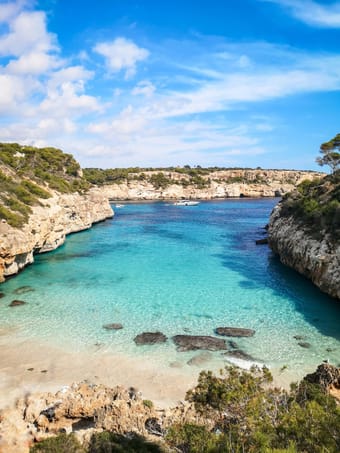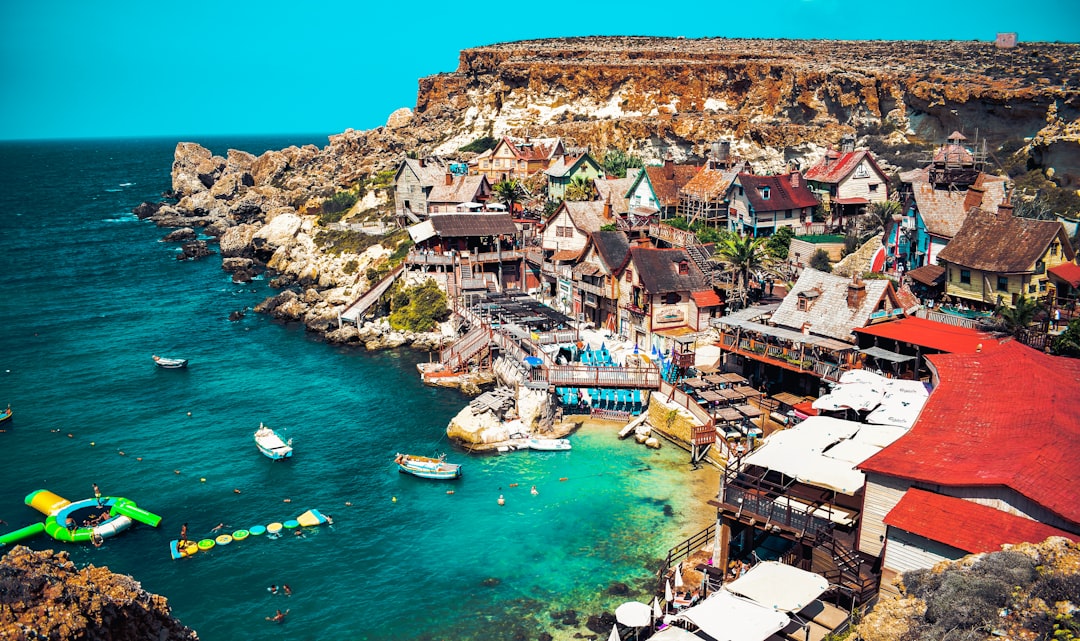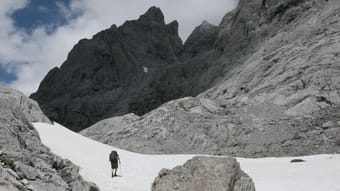Results for Europe de l’Est
Angela Gabriel Gomez
Available for hire
Traveling to Europe for the First Time: Italy, France, Belgium & The Netherlands
Embarking on a first trip to Europe is an exhilarating adventure filled with captivating experiences and cultural wonders. This itinerary will lead you to exploring the historic landmarks of Rome, strolling along the romantic streets of Paris, indulging in the famous Belgian waffles, to seeing the masterpieces of Van Gogh in Amsterdam.
The trip will begin down south in Rome in Italy and end up north in Amsterdam in The Netherlands. This comprehensive guide is your key to unlocking the essence of a European escapade.
History • Adventure • Shopping • People & Culture • Art
$85.00
6
We lived and explored Fuerteventura for 9 months. Here we share our favourite spots, campgrounds, hidden gems, restaurants, Camper parking spots, Camper service stations, and more.
We tagged everything so you can easily explore the beauty of Fuerteventura with some little notes by us. ✨
Backpacker • Family • Digital Nomads • Vegan • Vegetarian • Couples • LGBTQ+ • 50+ • Female Solo • Van Life • Slow Travel • Road Trip • Outdoors • Adventure
$10.00
1
Backpack Aleks
Available for hire
Europe in 3 weeks 🇩🇪🇮🇹🇫🇷🇲🇨🇧🇪🇳🇱 24 days budget itinerary through 6 European countries
This itinerary will take you through 6 European countries in 24 days. It starts and ends in Frankfurt as it has one of the major airports in Europe. I will walk you through day-to-day, places to visit, activities to do and what are the best options when it comes to transport between locations. I created this itinerary after travelling through Europe for the last few years. I combined my experiences to create a compact itinerary that lets you make the most out of 3 weeks in Europe.
📍Germany
📍Italy
📍Vatican
📍France
📍Monaco
📍Belgium
📍Netherlands
What is included:
✔️ Day to day itinerary for 24 days
✔️ Recommendations for activities in each location
✔️Two recommendations for budget accommodation in each location
✔️Food tour recommendation for each country to taste traditional food
✔️Comparison (price, duration, convenience) of transport options - bus, trains and Eurorail pass.
What is not included
❌Restaurant recommendations
50+ • Accessibility • Backpacker • Car-free • Couples • Digital Nomads • Family • Groups • Gluten-free / Celiac • Halal • LGBTQ+ • Pets • Plus Size • Female Solo • Vegan • Vegetarian • Adventure • Architecture • Art • Boutique • Budget • Design • Faith • Foodie • History • Outdoors • People & Culture • Photography • Relaxation • Road Trip • Romantic • Shopping • Sustainable/Eco • Wellness • Wine
$15.00
3
Some research based shortlisted hotels in Europe & Asia. All are central locations. Book away if you like any and you're welcome to share your feedback as I haven't stayed in most. Find me on Insta @nehastravelworld if you want to see my travels :)
You can get personalised guide for any of the destinations by simply scheduling your first travel consultation or by signing up for one of the curated recommendations packages on Thatch!!!
Destination included in this guide: (keeps getting updated)
Asia: Bali, Thailand, Vietnam, Sri Lanka
Amsterdam, Brussels, Spain (Barcelona, Madrid, Malaga, Sevilla), Lisbon, Vienna, Italy (Rome, Naples, Tuscany, Florence, Cinque Terre, Lake Como, Puglia, Amalfi Coast)
Female Solo • Digital Nomads • 50+ • Backpacker • Business • Couples • LGBTQ+ • Family • Groups
Free
15
EF Ultimate Break's Ultimate Europe trip is a 35-day adventure that takes you to 12 iconic destinations: Barcelona, Paris, London, Amsterdam, Prague, Munich, Lucerne, Venice, Florence, Rome, Athens, and Paros. This comprehensive package includes round-trip flights, accommodations, and guided tours, making it easy to focus on what matters most – exploring the continent!
Female Solo • Digital Nomads • Couples • Groups • Adventure • Foodie • Shopping • Art • History • Boutique • Coffee • People & Culture • Budget
Free
10
3 Month Campervan road trip which covered 13 countries (if you include The Vatican City) listed below:
Belgium
The Netherlands
Germany
Italy (and The Vatican City)
Greece
Albania
Montenegro
Bosnia and Herzegovina
Croatia
Slovenia
Switzerland
France
This is all the places I have recently travelled to in a my campervan on a wonderful 3 month road trip.
The map includes restaurant recommendations and all the places we stopped to visit.
We did a lot of snorkelling and hiking as well as city visits where we enjoyed trying the different cuisines of the new countries.
Digital Nomads • Adventure • Architecture • Budget • Foodie • Outdoors • People & Culture • Photography • Road Trip • Van Life
$10.00
0
Después de 6 años viviendo en Suiza y armando muuuuchos itinerarios combiné de la mejor manera los lugares que si o si tienes que visitar para aprovechar de la mejor manera el SWISS TRAVEL PASS.
Vas a disfrutar del Glacier Express, Zermatt la zona central de Suiza como Jungfrau e Interlaken y también dos de las ciudades más lindas de Europa: Zurich & Lucerna.
El itinerario está orientado para realizarse en todas las estaciones del año!
Adventure • Foodie • Nature • People & Culture • Romantic • Slow Travel • Photography • Mountain • Camping • Relaxation • Sustainable/Eco • Wellness • Luxury • Budget
$19.00
5.0
(2)
9
Are you planning a summer vacation in one of the most beautiful islands in Europe?
Here is a useful interactive guide where you can find the most beautiful beaches to visit and things to do, directly book an hotel from the list I picked for you ( from affordable to luxury) and read about some informations.. all in one place!
Tap into each place to get directions with google maps and read info. Don't forget to download Thatch free app to have easier access. :)
Beach • Road Trip • Budget • Luxury • Boutique • Nature
Free
68
Welcome to the ultimate guide for unlocking the full magic of Barcelona, one of Europe's most captivating cities. Barcelona truly has it all: art, a rich history, culture, mouthwatering cuisine, inviting beaches, and architectural wonders. It's no wonder that Barcelona consistently ranks as one of the world's top tourist destinations.
I've had the pleasure of visiting this vibrant city over ten times, drawn not only by my many friends who call Barcelona home but also by the unique energy that surrounds it. My first solo trip to Barcelona at the age of 19 left me instantly enamored with its charm, and now, at 31, the city continues to dazzle me in countless ways.
Let me be your guide to ensuring that your Barcelona adventure is nothing short of extraordinary, with my personal recommendations and insights." ✨🇪🇸
This itinerary includes:
- Essential tips to know before traveling.
- Four full days in Barcelona, featuring renowned landmarks alongside hidden gems, with an optional day trip to either the beach or the mountains.
- Within each neighborhood, you'll discover my curated recommendations for restaurants, bars, cafes, and brunch spots.
- I've also meticulously selected accommodations that prioritize affordability, prime locations, and high-quality amenities.
- Some exciting plans to enjoy in Barcelona beyond sightseeing
Backpacker • 50+ • Car-free • Couples • Digital Nomads • Family • Groups • Female Solo • Architecture • Art • Budget • Coffee • Design • Foodie • History • Outdoors • People & Culture • Photography • Slow Travel • Wellness
$9.99
58
THE DAY-BY-DAY GUIDE TO A PERFECT INTRODUCTION TO ROME 🇮🇹
I've been fortunate enough to visit Rome multiple times and even more fortunate to have been guided by true Italian friends. Here I take all that I've learned from those travels and distill it into one perfect 3-day introduction.
This itinerary is perfect for someone visiting Rome for the first time and then continuing on to other parts of Italy for the rest of your trip. You'll visit all the truly must-see sights like the Colosseum and the Vatican, but you’ll do so at a pace that won’t make you exhausted and miserable.
Generally I recommend that people spend even longer in Rome (because there’s just *so much* to see here), but I know the stats say 3 days is really typical. I completely understand. Europe is expensive and you want to make the most of your trip. But, I think you'll find that these 3 days barely scratch the surface of the Eternal City, and you'll be itching to come back to see (and eat) everything Rome has to offer!
Couples • Family • Luxury • History • Art • Architecture • Foodie • Romantic • Photography
Free
11
In Europe, Mallorca is famous for its parties in El Arenal and it does live up to its reputation but this Balearic gem has so much more to offer and for sure will surprise you in the most stunning way. Go and explore cute and peaceful mountain villages, jaw-dropping beaches and secluded coves, delicious food, colourful markets and the wonderful Mallorquín atmosphere! This island will cast a spell over you that you will not be able to escape.
My comprehensive guide comes with an interactive map with all the best places, including:
❗ important facts
📖 a mini guide for Palma
🌊 the most beautiful beaches and calas
🏡 picturesque villages
🛍️ the best markets
👀 things to do and see
🛌 accomodation options
🥘 food recommendations
Make sure to subscribe to my travel shop and save this guide to get future updates and notifications about new guides🙂
50+ • Backpacker • Couples • Family • Groups • Female Solo • Adventure • Architecture • Boutique • Budget • Foodie • History • Luxury • Outdoors • People & Culture • Photography • Relaxation • Romantic • Shopping
$5.90
7
Famous for art and architecture, Barcelona is popular for good reason! You can often find cheap flights here from other spots in Europe, so it’s always worth adding on to your next trip!
This guide gives you tons of suggestions to the Catalonian capital of Spain - enough to keep you busy and fed for 5 days. If you have fewer days, I’ve prioritized the best parts.
On this guide, you’ll get:
- the major sights with notes on what you’re seeing and if they need advanced booking
- an interactive map to help navigate you to each spot
- instructions on how to get around the city, as well as to/from the airport
- 3 shops for handcrafted espadrilles or leather boots
- 9 restaurants at varying price points, 6 cafe & bars, and 2 accommodation suggestions
History • Foodie • Architecture • Art • People & Culture • Wine • Coffee
$25.00
5
Welcome to Eastern Sicily, where stunning scenery, rich history, vibrant culture, sunny beaches, and delectable cuisine await you on an unforgettable road trip.
Get ready to explore some of the most iconic destinations in the region and live amazing experiences.
Starting in the enchanting town of Taormina, one of the capitals of Italian Dolce Vita, this itinerary takes you on a journey through the provinces of Catania, Syracuse, and Ragusa, not to forget the imposing Mount Etna, Europe's largest and most active volcano.
Each stop along the way offers a unique glimpse into the island's diverse culture, from the ruins of ancient Greek temples to the bustling streets of vibrant cities.
Whether you're looking to bask in the warm Mediterranean sun, indulge in traditional Sicilian delicacies, immerse yourself in the fascinating history and culture of this captivating region, or witness some of the world's most spectacular natural wonders, this road trip has something for everyone.
So fasten your seatbelts and get ready to embark on an adventure that will leave you with memories that last a lifetime.
What's included in Eastern Sicily Road Trip Guide:
✔️ An itinerary through the main destinations in Eastern Sicily
✔️ 20 Hotel recommendations in various location
✔️ 30 Recs of places to eat along the way
✔️ 12 Experiences, guided day tours and excursions to book
✔️ Interactive map of the itinerary
Boutique • History • Foodie • Nature • Art • People & Culture • Slow Travel • Romantic • Road Trip
$20.00
4
We visited Malta in September 2022 and it was honestly one of the best places we’ve been in Europe. I’d highly recommend taking a trip to this island if you are looking for an equal mix of beach break and sight seeing in the city.
In this guide, I’ll take you through the full detailed itinerary of our trip, including 5 full days of activities and 2 travel days
(1 week in total)
Itinerary overview:
Arrival day: Travel day (we arrived in Malta late at night)
Day 1: Exploring St Paul's Bay
Day 2: Sight seeing in Valetta
Day 3: Café Del Mar beach club
Day 4: Boat trip to the Blue Lagoon
Day 5: Rooftop pool & Taza sky bar
Day 6: Travel home :(
This guide includes hotel recommendations, places to eat and drink, sight seeing tours, landmarks to visit, transportation details and more.
Adventure • Architecture • Art • Foodie • History • People & Culture • Romantic • Coffee • Beach • Relaxation
Free
4
Seven-day trek based in refugios.
INTRODUCTION
The Picos de Europa is a region of limestone peaks reaching over 2500 metres above sea level; the highest being Torre de Cerredo at 2650 metres. The route described here is one that I hiked alone in early summer. The best time to tackle the route is between June and September. There is more likely to be snow on the high passes in early June but they are usually not to difficult to negotiate.
The Picos de Europa is not as well known as the Pyrenees or Alps and as such the hiker traffic is less and the tourist infrastructure is less developed. This makes the area feel less spoilt but it can also make it a more challenging area to explore with fewer trails and little to no signposting. Always take a map with you: the Editorial Alpina 1:25,000 maps are the best. I took these and also used the outdooractive app and downloaded the relevant map tiles. This is useful for pinpointing where you are, in what can be confusing terrain. I was lucky to have clear weather for my entire trek but I would imagine that it's pretty difficult to navigate when the cloud is down on the mountains so take a compass too.
You can stay in refugios every night on this hike and wild camping is permitted above 1500m; details below.
I can't recommend the Picos de Europa as a hiking destination enough. The mountains are magnificent but there are also beautiful extensive woodlands at lower altitudes, as well as meadows full of wildflowers and butterflies. The juxtaposition between the stark limestone peaks and the gentle greenery of the valleys is beguiling.
DISCLAIMER: Please note that hiking in the Picos de Europa is not risk free. It is a very challenging area in which to hike. I accept no responsibility for any accidents you may experience while hiking this route. You are responsible for your own safety. Some of the dangers and difficulties are listed a little further down this guide.
HOW BUSY?
Unlike some of the more well know hikes around Europe this trail is less well trodden and as such the trail can be quite hard to follow at times, and at other times there is no trail! Despite this, refugios, being small, fill up fast (see below).
REFUGIOS
The hike is made easier if you stay in the staffed refugios where you can recharge your metaphorical batteries. Accommodation at these mountain huts is in communal dormitories and you will need to bring your own sleeping bag. It's best to book ahead as they are often full throughout the summer. Prices are around the €12-17 mark and they also do affordable meals (breakfast, picnic lunch and dinner).
There is also a handful of unstaffed, very basic mountain shelters with no services and no beds but these can be a good option in an emergency. Most of the refugios only accept cash so be sure to take plenty with you before you set off as there are no ATMs! All the refugios on the route are listed in the route description below with website links.
WILD CAMPING
Camping is only permitted at 1500m above sea level or higher. There is not much water anywhere above this altitude so be sure to fill up when you get the chance (at refugios) before camping in a remote spot.
POSADA DE VALDEON
This beautiful village tucked in the valley between the Macizo Central and Macizo Occidental is a lovely place to wander for a few hours. At the centre of the village there are a number of restaurants and bars and a small square with a water fountain. If you need somewhere to stay before or after the trek you'll find hotels, guest houses and a youth hostel. There is a hotel recommendation and link in the route description.
In the centre of the village is a pharmacy should you need any blister plasters! And on the road to the west of the village is the National Park office where you can find information about hiking and anything else to do with the national park.
GETTING THERE
From the UK there are Ryanair flights to Oviedo (Asturias airport) from London Stansted. A bit further afield you can get flights to Bilbao and Santander from the UK and the rest of Europe. Getting from the airport is a little complicated but there are buses to Posada de Valdeón from Oviedo changing in Cangas de Onis. The journey takes about 4.5hrs. There are also buses from Santander and Bilbao changing in Llanes and Riaño with the journey taking around 15hrs from Bilbao.
An easier but more expensive option is to get a taxi. You could also hire a car but of course you will have to leave the car sitting idle in Posada de Valdeón while you do the hike.
FLORA & FAUNA
This area of northern Spain is fantastic for wildlife. At lower elevations the beech and sessile oak woodland stretches for miles over rolling hills. This is part of the boreal forest that once would have covered much of Europe and is home to roe deer, wild boar, red squirrels, pine martens and brown bears.
In the skies you have a good chance of seeing griffon vultures, golden, booted and short-toed eagles, black kites and peregrines. Of the smaller passerine species the Picos are home to red-backed shrikes, black redstarts, spotted flycatchers and black woodpeckers.
But it's the wildflowers in the meadows and on the woodland edges that are the real joy and most easily appreciated. Vetches, cinquefoils and orchids create a colourful patchwork of colours with butterflies bringing the whole scene to life. Look out for swallowtails, fritillaries and hairstreaks.
NAVIGATION
Navigation is difficult as the terrain can be confusing and in many places there is no trail whatsoever. Take a map (1:25K Editiorial Alpina maps are the best), compass and GPS and know how to use them. It's also a good idea to download the map on a relevant map app. I used the outdooractive app but others are available.
WEATHER
Thunderstorms are common, usually in the afternoon and these can be particularly dangerous high up in the mountains. It's best to hike early and get to a refugio by lunchtime if there are afternoon thunderstorms in the forecast. The weather in this part of Spain is very changeable as it has a maritime climate. Rain and thick fog are possible but equally long periods of warm sunshine are not unusual. The best advice I can offer is to be prepared for anything. Pack suncream and a sunhat but don't forget your waterproofs either.
FALLING ROCKS
Rock falls are not unusual as chamois and other hikers can dislodge rocks above you. Getting caught in a rockfall is not so common but not impossible. Be aware and if you see rocks heading your way, and cannot find cover, crouch down on the floor and pull your rucksack over your head and back.
DRINKING WATER
There is very little running water as these mountains are mostly comprised of permeable limestone. You will need to take plenty of water with you each day (I packed three litres every day and usually drank it all). You can fill up at the refugios and there are a few fountains / fuentes although most of the ones I saw marked on the Editorial Alpina map were dry when I found them.
THE SUN
Sunburn and sunstroke are both real dangers and there is little shade. Keep hydrated and wear a sun hat that covers your neck.
TERRAIN
In some places you need to scramble up steep rocky sections. You will need to have experience in this kind of terrain and have a head for heights! The terrain is very rocky and uneven at higher altitudes so you will need strong, sturdy footwear. Trekking poles are also invaluable in providing support and helping you across and up awkward sections. There is also a lot of steep ascent and descent on this route so you will need to be reasonably fit.
DANGEROUS ANIMALS
On many parts of the trail you will encounter cows. In my experience they are very docile and used to trekkers so they shouldn't be of any concern. You may also find flocks of sheep and while these aren't dangerous they are often accompanied by shepherd dogs which have been trained to keep intruders away from the flock. They can be quite intimidating when they start barking at you. If you see sheep ahead it is best to give them a wide berth, even if this means veering away from the trail for a while. If you walk directly towards or through a flock of sheep you risk agitating the shepherd dogs.
Bears are not common in the Picos de Europa but there are bears in other parts of the Cantabrian Mountains, notably Somiedo National Park, not far to the west, and there is always the possibility of seeing an itinerant bear wandering through the Picos. Eurasian brown bears are not as big nor aggressive as the grizzly bears of North America so you shouldn't worry too much about an encounter. It's extremely unlikely you will see one so if you do, consider yourself very lucky.
Wild boar are common in the woodlands at lower altitudes. They are not as aggressive as some people will tell you and tend to be nocturnal. I did see some in the daytime near Vegabaño. As soon as they saw me they ran away, crashing through the undergrowth. As with any large animal it's best to simply give them plenty of space to move away from you.
I hope none of this advice puts you off hiking in the Picos de Europa. Yes, it's a challenging mountain area but the rewards for hiking here are great. Enjoy the hike!
Adventure • Nature • Slow Travel • Sustainable/Eco • Mountain • Camping
$12.00
3
Whether you have 2 weeks or a few days to explore Sardinia, it's guaranteed to include crystal clear water, great beaches, and good food!
This guide will give you everything you need to make the most of southern Sardinia! You can drive an hour and get to some of the most pristine beaches in Europe!
Places are organized into Cagliari hiking and beaches, then into three easy day trips further out of the city. Each day trip gives multiple beach options, meaning the three could turn into 6 or 8 without repeat locations.
It's designed with Cagliari as a home base, but can easily flex to suit basing your time anywhere in southern Sardinia, or as a circular road trip!
In this guide, you’ll get:
- an interactive map to help navigate you to each spot
- 4 lodging recommendations in Cagliari
- 3 local Cagliari outdoor activities, including beach tips and how to get there without a car
- 5 beaches
- 5 wineries and 2 restaurant suggestions
- 6 historical sights or cute towns to explore
Before you buy: everything on this list is included in my Cagliari & more guide, so if you want restaurants and a city guide as well, choose that instead!
Foodie • Beach • Relaxation • Road Trip
$19.00
2
I've compiled free activities to do in Barcelona for every day of the week. There are plenty of events during the weekend as Barcelona is a lively city so I would also check for any activities taking place the weekend you decide to go. Keep in mind that most museums are free for entry on the first Sunday of each month and this applies to most museums across Europe.
Female Solo • Family • Backpacker • Couples • Digital Nomads • Groups • Adventure • Architecture • Art • Budget • History • Outdoors • People & Culture • Photography • Relaxation • Slow Travel
$5.00
2
Ask ThatchGPT
